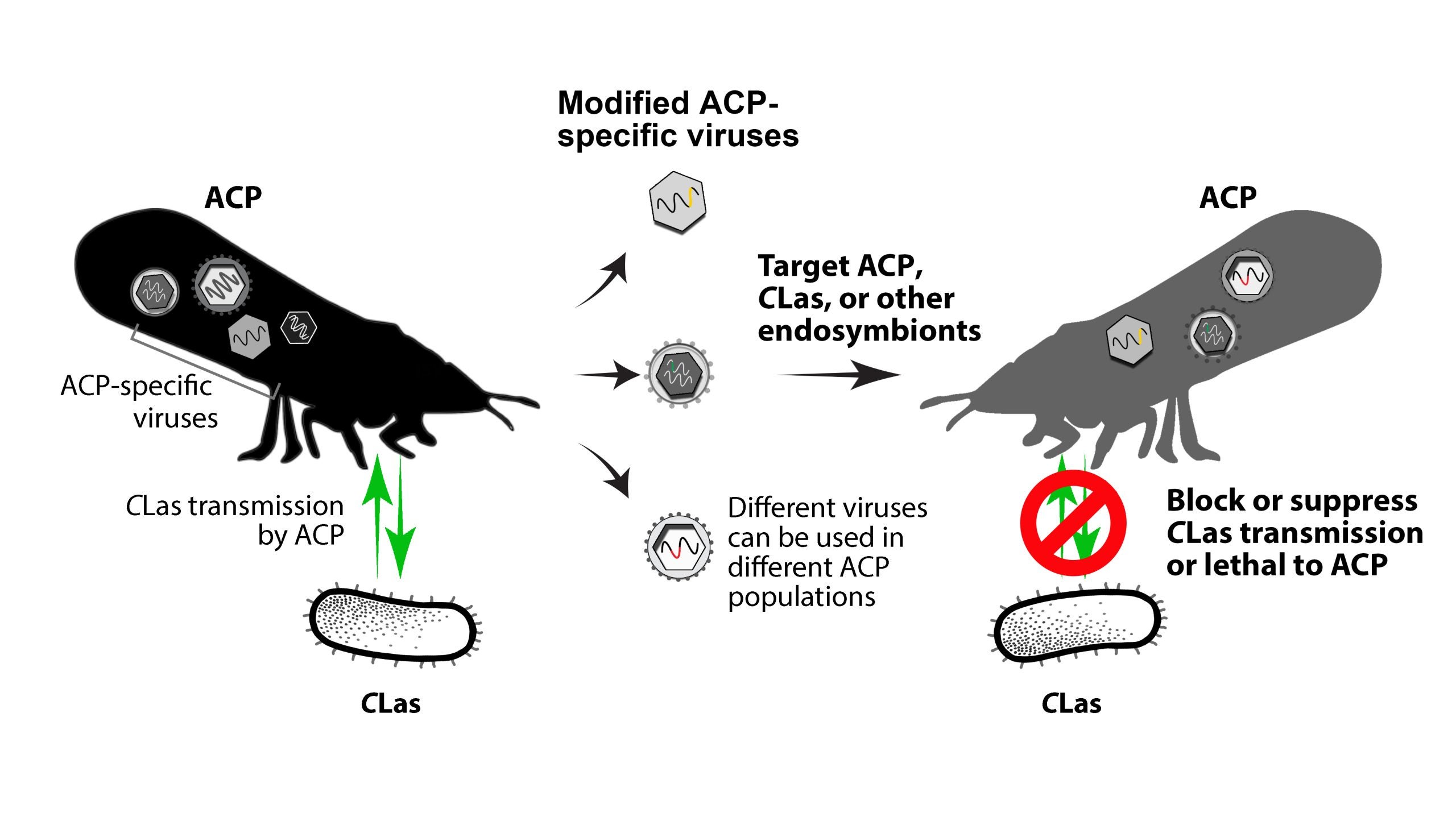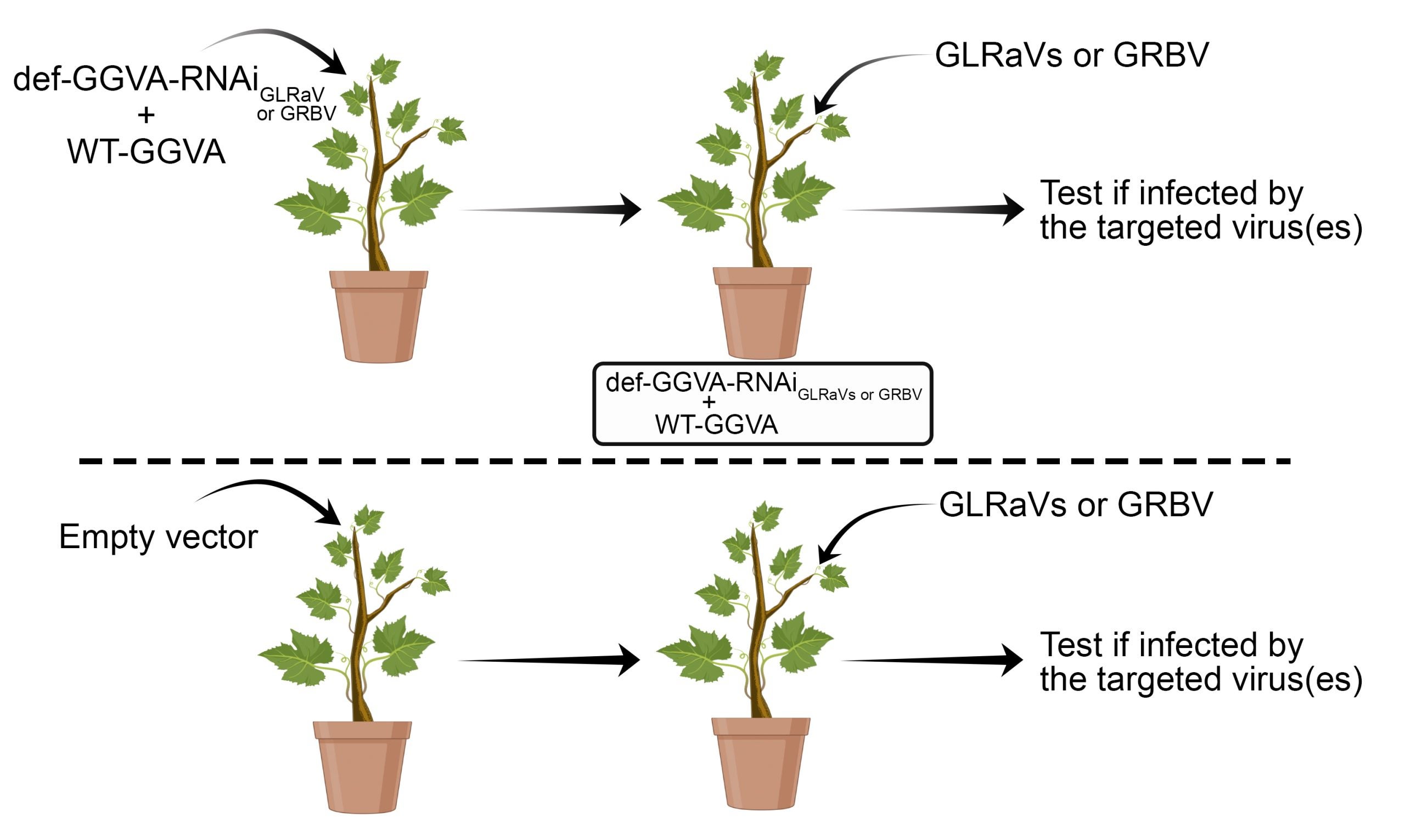For Citrus Disease

Research Snapshot – Science for Citrus Health
RNA interference (RNAi) is a biological mechanism where small RNAs bind to RNA and prevent the RNA translation process or where they degrade long RNAs with a specific targeted sequence, resulting in a change in gene expression and related metabolism. This mechanism was found to be essential not only for regulating gene expression in plants and animals, but also for host defense mechanisms. In this project, we are developing non-pathogenic virus-based RNAi induction to interfere with Asian citrus psyllid (Diaphorina citri) infection – with the goal of suppressing HLB. Applications, such as sprays of double-strand RNAs to induce RNAi in citrus, are expensive and inefficient. For sustained and effective solutions to block or suppress Candidatus Liberibacter asiaticus (CLas) in D. citri, we are developing a virus-based system using viral endosymbionts of D. citri. These endosymbionts are viruses that live in close physical association with plant cells and are in a situation in which both organisms benefit.
To develop a comprehensive and thorough insect-specific virus (ISV)-based management strategy against HLB, we have simultaneously studied the D. citri genome that provides an important foundation for future D. citri and citrus greening studies. The biology studies of D. citriand its viral endosymbionts will help us choose the best potential target sequences to achieve the desired effects on Clas transmission. The breadth of our D. citri genetic resources, D. citriviruses in culture, and the depth of data generated so far make us uniquely able to use viral endosymbionts as future tools for citrus greening biocontrol strategies.
For Grapevine Disease

Grapevine leafroll is the most complex viral disease of grapevines worldwide, and is economically important in all grape-growing regions. At least eleven viruses and several species of mealybugs and scale insects were reported to be associated with the disease complex. Given the lack of natural resistance in vinifera grapevines and challenges in developing disease resistance by conventional breeding, more control strategies are needed for this disease and its associated insect vectors. For the proposed project, we will build upon our successes from the previous funded project and use grapevine virus-based RNA interference (RNAi) approaches to target grapevine leafroll-associated viruses. We have successfully achieved the ability to perform all our assays directly in grapevines, including multiple cultivars, instead of needing to rely on model plants, such as Nicotiana benthamiana. From the previously funded projects, we were able to deliver expression plasmids and viral vectors directly into greenhouse grown grapevine plants without relying on regeneration from somatic embryos and/or in vitro micropropagation. We also have successfully developed 2 grapevine virus infectious clones that give asymptomatic infections in greenhouse grown grapevines. A manuscript reporting those successful accomplishments have been submitted to the journal Phytopathologyfor publication. We identified the best insertion sites and develop the viral infectious clones into useful viral vectors for RNAi applications and will use the viral vectors we have developed to deliver and enhance the RNAi efficacy in grapevine rootstocks and scions against GLRaVs. This project will provide new important information and help with development of contemporary strategies and management approaches for the Grapevine leafroll disease (and possibly their insect vectors), and could be directly applicable against other important grapevine viruses such as grapevine red blotch virus.
Sustainable Winegrowing Podcast: 189: RNA-Based Vaccination of for Grapevine Viruses
